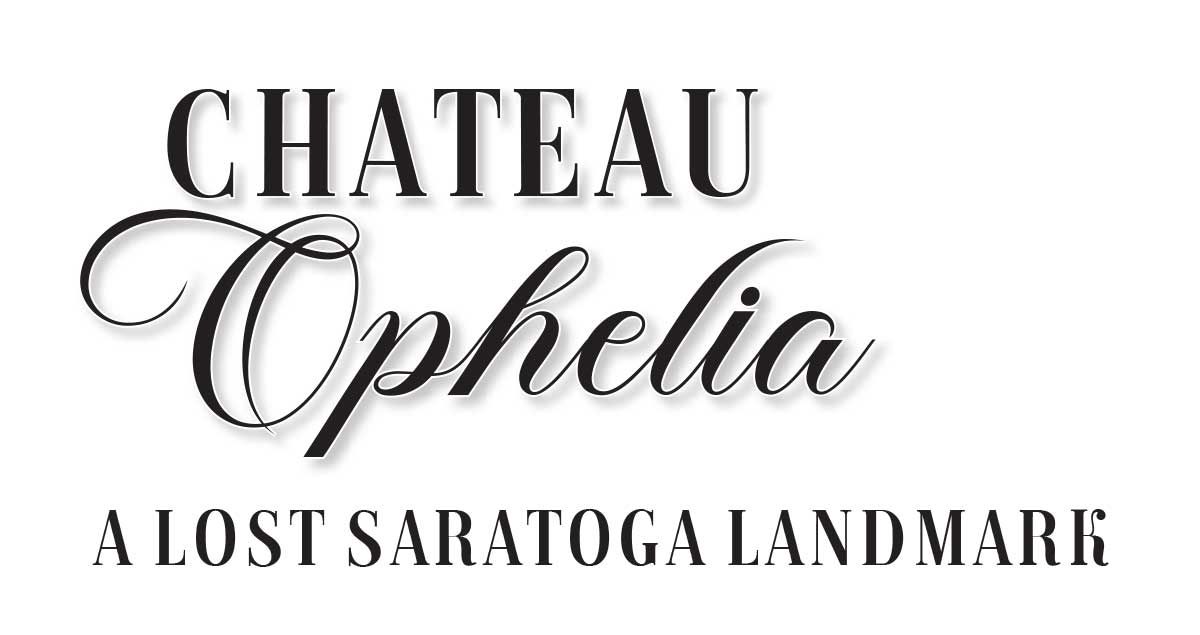
Written by Bill Orzell
[From the 2025 Home & Garden Magazine]
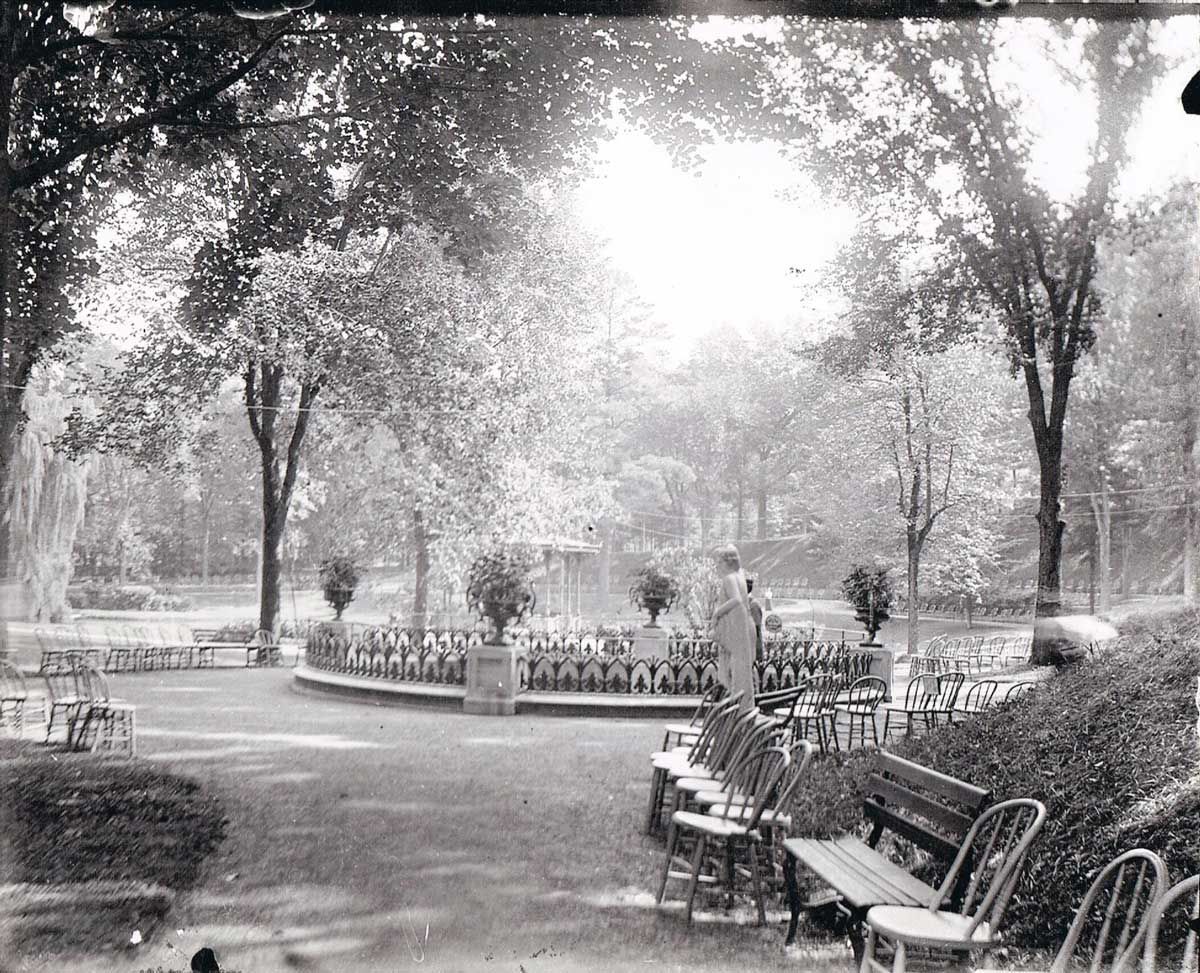
Congress Park
Photo Courtesy of the George S. Bolster Collection
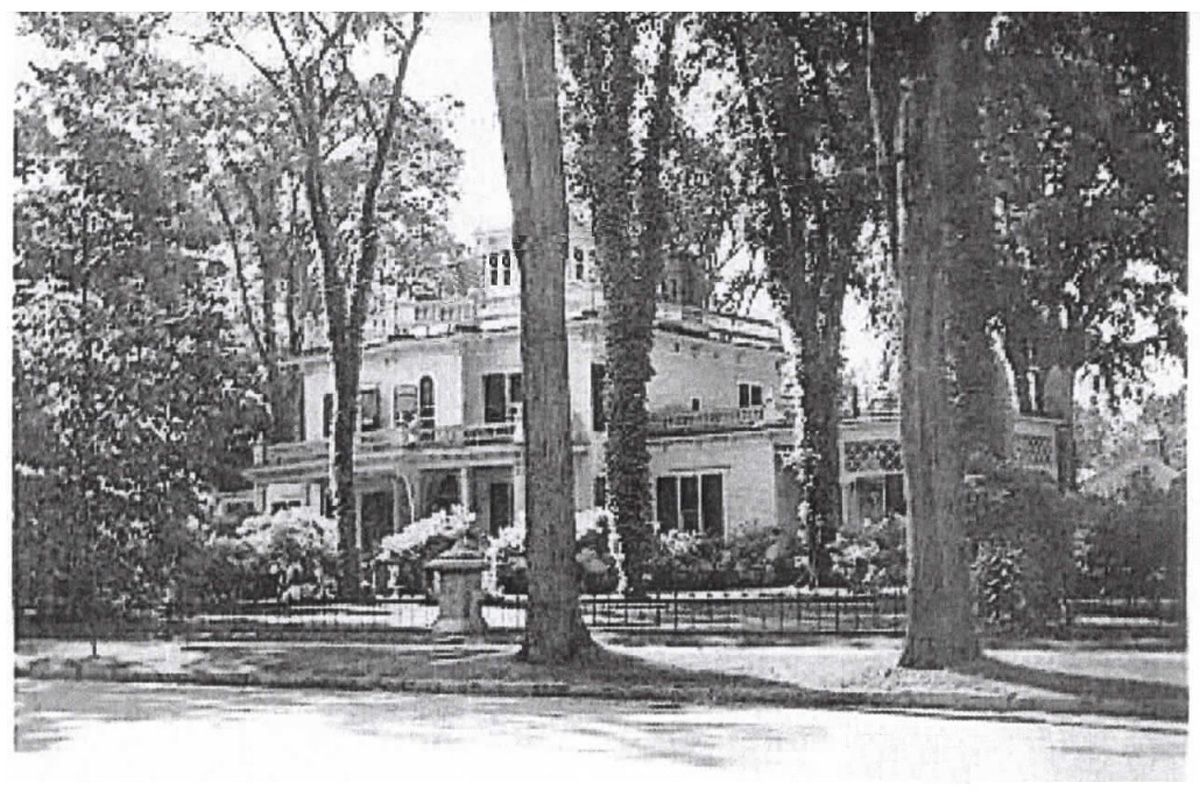
Chateau Ophelia as seen through its shading fountain elms from the Five Points. Constructed in the Italianate style, the mansion's exterior featured a low-pitched roof with cresting railing on both stories, projecting eaves supported by large decorative cornice brackets, tall windows with ornate pediments, and a square belvedere. Courtesy of Saratoga Springs Public Library – Saratoga Room.
There is a certain intrigue to geography which is recognized by some, but not all, and travel for them naturally includes the simple elements of time, speed and distance, but still another consideration, which are the lost waymarks of the past. This recognition of what had been, but can no longer be seen, is fundamental to understanding location. Where some would see only a parking lot, others would marvel over the structure which once engaged the same site, and those that built and occupied what has vanished. Consideration, and understanding of what once had been, needs to be made and navigation there might seem like the long way around, but after all, “if you are going to drink the water, you should know who dug the well.” Saratoga Springs, the place of so many pleasures and healing waters, where characteristic breezes blow down from the Adirondacks foothills freighted with ozone to disperse the mist of time, contains many such lamented, lost landmark locations.
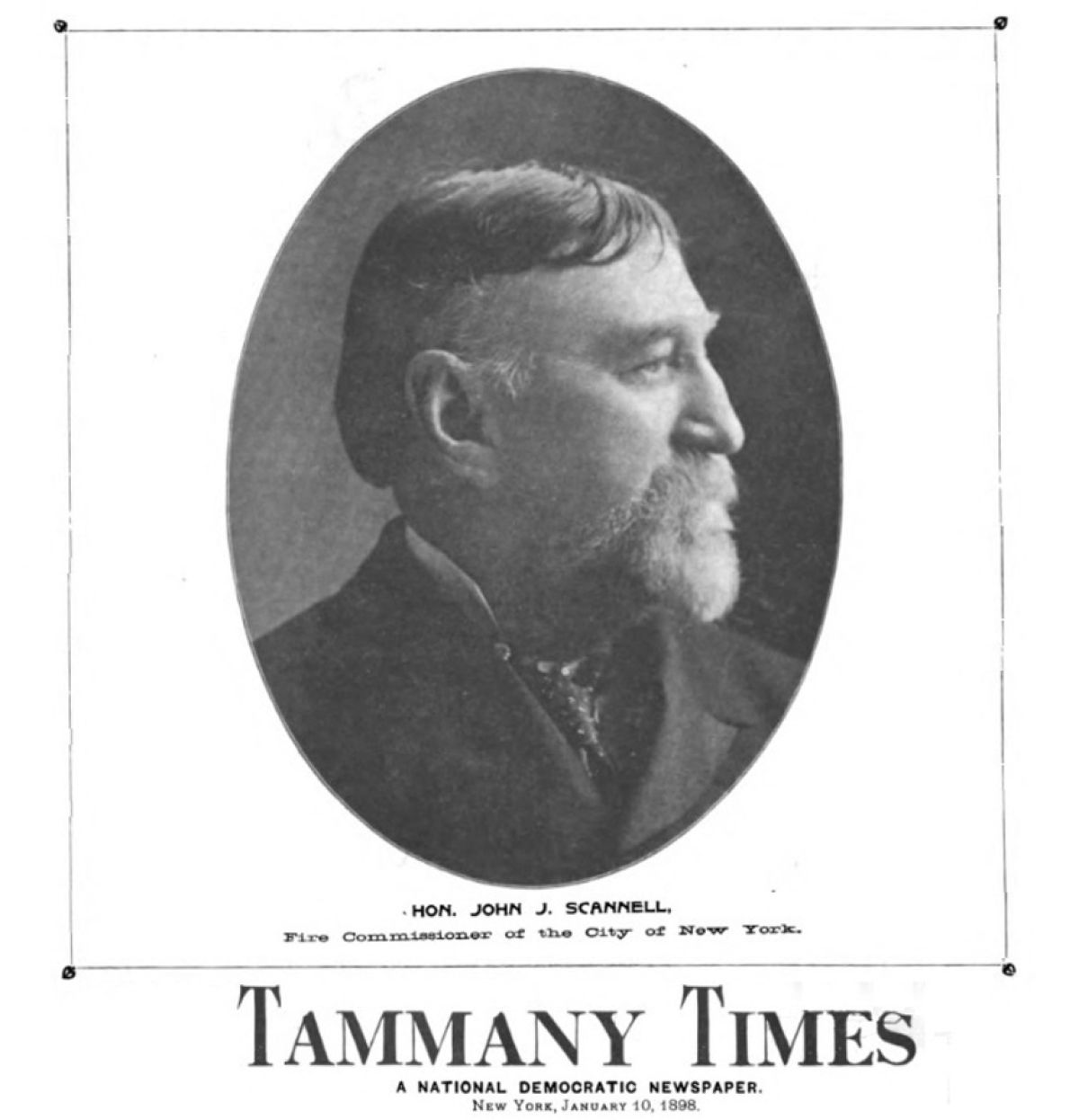
Period image of John J. Scannell
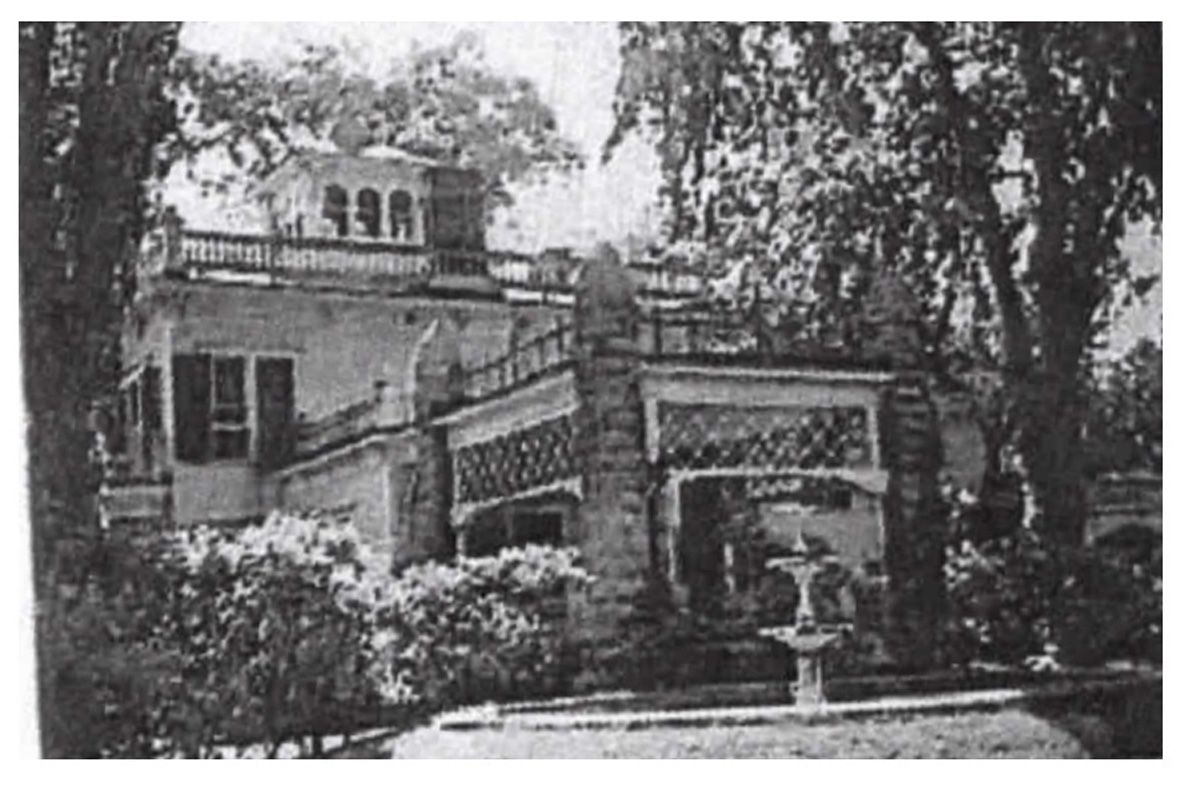
Details of Chateau Ophelia’s belvedere, roofline cresting, porte cochere wih masonry pilasters, balcony and garden. Courtesy of Saratoga Springs Public Library – Saratoga Room.
Many of the guide posts have changed over time, figuratively and actually. Lincoln Avenue had long before been known as South Street. This important thoroughfare still has a complicated compass spinning intersection with Jefferson Street, Park Place and Clark Street which was originally named for the founder of Congress Spring Park, known collectively as Five-points. The south-east portion of this junction fronting on South Street at Jefferson and further framed by Webster and Madison Streets was developed as an entire block with single ownership. Following the 1866 marriage of Miss Lillian E. Barbour, daughter of Oliver Lorenzo Barbour, to Washington A. Coster the property was improved with a large structure. The death grip of mortgage foreclosure caused title transfers and on February 10, 1881 the Saratogian reported,
“Charles Hillsburgh has purchased the Coster-Barbour property, on South street, and the papers were passed Monday. It is a beautiful lot, covering a whole block, and we understand that Mr. Hillsburgh intends to make extensive improvements to both the house and the grounds. His excellent taste will have full scope here.”
The Hillsburgh heirs eventually transferred the property, which became the possession of John Jay Scannell in the early summer of 1889. Mr. Scannell was a widower, his late wife Ophelia having passed away while only in her upper thirties, some six years prior to his Saratoga Springs acquisition. The new owner reached out for local professionals; architect R. Newton Brezee and landscape gardener Charles Ludwig, to improve the property he designated Chateau Ophelia into his vision of a summer place to be. J.J. Scannell made a fortune distilling whiskey and became a Tammany Fire Commissioner in New York City being well connected in the Democratic Party of that time. Early in his political career John Scannell killed a man, who had shot and killed his brother, and employed a temporary insanity plea. Like a number of men who visited Saratoga Springs in the late nineteenth century, such as John McBain Davidson who built his home at 203 Union Ave and was a partner of John Morrissey in founding the Race Track, Ed Kearney, Saratoga Association President, and William C. Whitney, Mr. Scannell also had deep ties to the Tammany Tiger of the then unincorporated metropolis. A frequent guest at Chateau Ophelia, which was improved into the style of a fine large French Villa, was Tammany Boss; Richard Croker. Mr. Scannell and Boss Croker both bought, sold and raced horses on an extensive scale, operating a large export trade shipping equine stock to Europe, making Chateau Ophelia their Saratoga base of operations.
Primary sources are relied upon for accurate descriptions of structures which existed in the past. The Saratogian on February 7, 1890 published the head line, “A Glance at the Interior of One of the Prettiest Residences in Saratoga Springs.” This article transports us back through time, and invites us inside Chateau Ophelia,
“A Saratogian scribe visited the place yesterday. Saratogians are familiar with the delightful situation of the grounds and a trip through the residence will prove interesting. Crossing the threshold of the front door one enters a spacious hall, at the end of which is a large fireplace, which presents a cheerful welcome, especially during the winter months. The hall is richly carpeted with extra gobelin tapestry [made at the Gobelins Factory in Paris], as are also the stairs, which lead from the main hallway to the upper apartments. The reception room to the right as one enters is covered with the same carpeting. This room is a gem. It has a bright, cheery appearance, and contains a mantel set in white and gold with French beveled plate glass. The room is painted in colors to match. Adjoining this to the right is the library, with many valuable books, rare reproductions of famous paintings, testimonials from Tammany Hall friends to Mr. Scannell, a rare antique ebony cabinet richly carved and other interesting articles. The curtains of these rooms are of Brussels lace. To the right of the main hallway is a drawing room, in white and
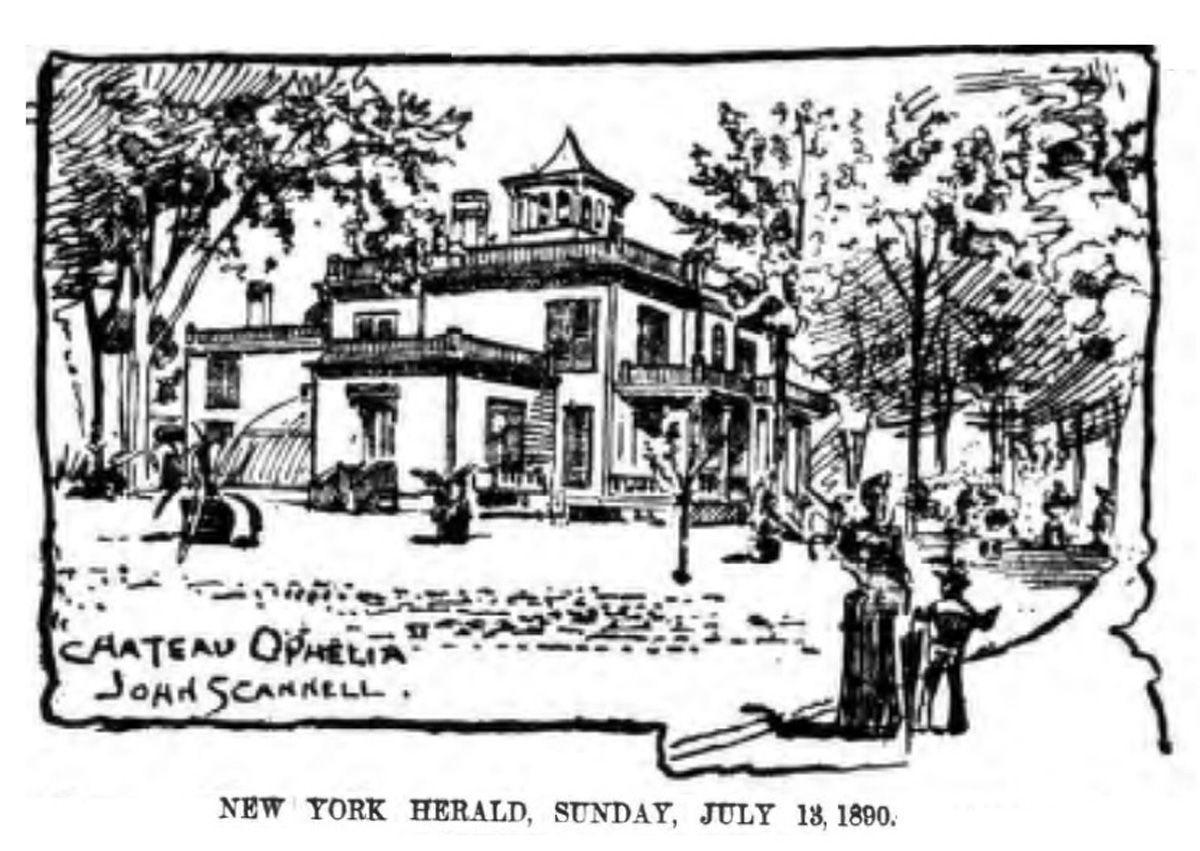
Image of Chateau Ophelia from the period the structure was owned by John Scannell.
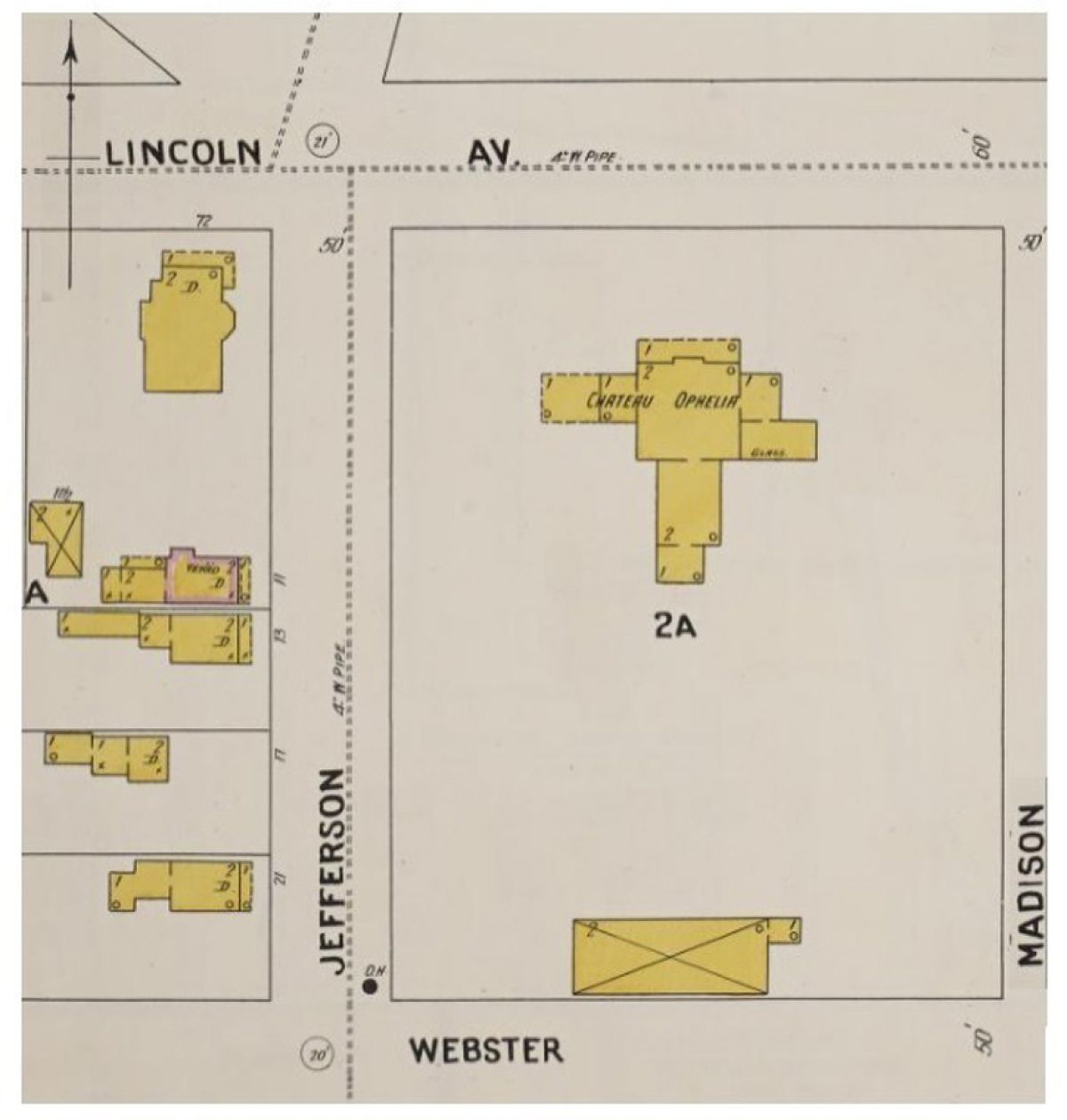
1900 Sanborn Fire Insurance Map depicts the location of Chateau Ophelia at the Five Points. Courtesy of Saratoga Springs Public Library – Saratoga Room.
gold, with mantel and glass to match. Directly off this to the right is the music room, also finished in white, with gold trimmings, and containing a grand Weber piano. Passing through a small side hallway from these rooms one enters the family sitting room, finished in cherry and containing the family portraits. The east side of this room is one large French plate beveled glass, which separates it from the conservatory. This room is a charming place. Passing directly across the main hallway and by the large fire place into the dining room, one is delighted. The windows are of cathedral jeweled glass. This room is also furnished in cherry, and is carpeted with [thickly piled] Moquette. The upper rooms are also very prettily furnished and have Moquette carpets. The lower floor in the rear contains the servants' dining room, kitchen, etc., all of which are nicely fitted up. Overhead are the bathrooms and servants' sleeping apartments. The house throughout is elegantly furnished. At the foot of the stairway in the main hall is a magnificent statue of Alexander the Great. Mr. Scannell has combined elegance with simplicity in making all the improvements and in furnishing.”
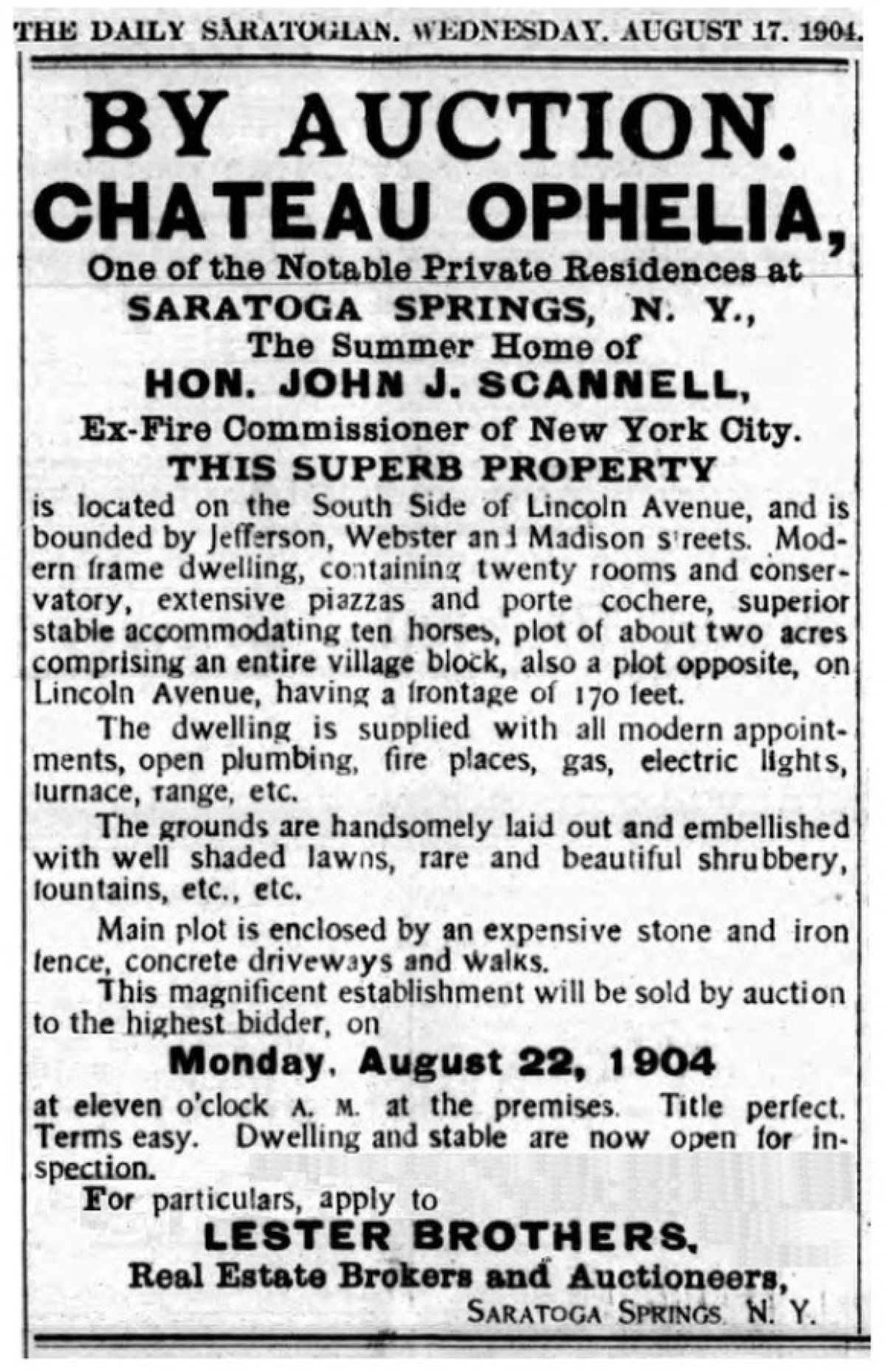
Auction advertisement during the 1904 track season.
By 1904 Mr. Scannell’s racing interests began to change when his trainer/driver John Kelly decided to relocate to the warm climate of California. Mr. Scannell used winter training facilities of the Jewett Farm in western New York, and decided to replicate them somewhat at his own facility at Fishkill-on-the-Hudson and sold Chateau Ophelia at auction to Annie E. Logan, who would sell-off the interior furnishings and flip the property. Solomon Jacobs became the new owner in 1905, and Chateau Ophelia was his summer home for many seasons. Upon his death in 1914, the property which by then had been designated as 108 Lincoln Ave., transferred to his wife Sarah.
The summer of 1918 was epic in Saratoga Springs. The US Army Expeditionary Force had been dispatched to France to join the Allies in Europe. The Saratoga Association’s Race Course had been rebuilt and was yielding one track record after another with lightning fast action. Enrico Caruso, tenor of the Metropolitan Opera Company was in town to give a concert at Convention Hall, and was a guest in Chauncey Olcott’s Clubhouse box. Fasig-Tipton’s staging of their annual yearling sales, brought more than their usual excitement, as a horse in the sales ring would benefit the War Chest. Mrs. Sarah Jacobs of Chateau Ophelia, had donated the handsome black mare, Star Baby Lee, which had belonged to her grandson who was with the Marines preparing to fight in France. With prompting from noted Thoroughbred breeder Willis Sharpe Kilmer of Binghamton, the mare was sold and resold over-and-over, building up the War Chest substantially, and raising everyone’s patriotic spirits.
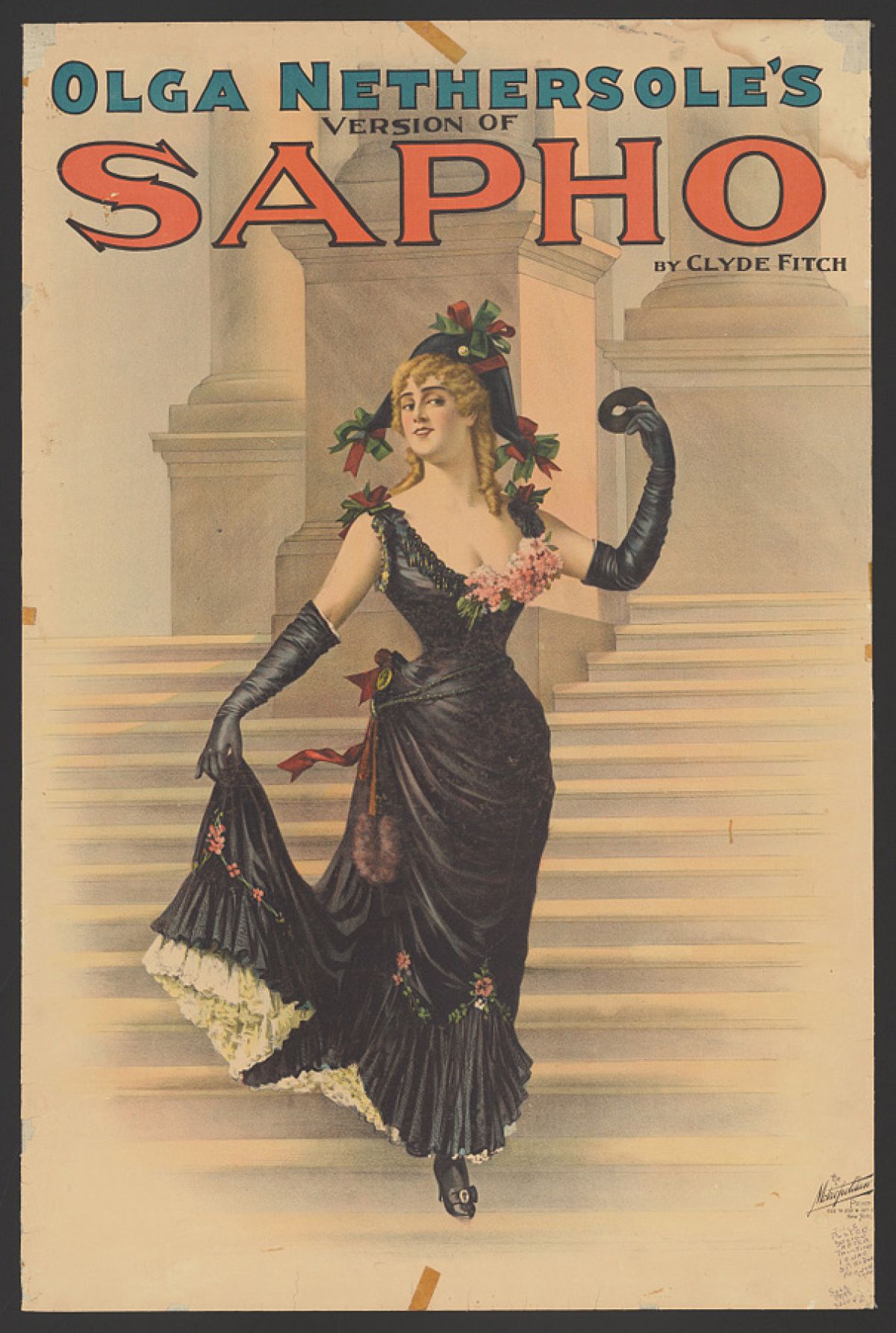
John J. Scannell was something of a “trusted official” and was consulted by a number of New York City daily newspapers in early 1900 when a salacious show, "Sapho," played in Manhattan and actress Olga Nethersole was arrested for being indecent. John Scannell dismissed the scurrilous reports about "Sapho" in certain newspapers, and expressed great surprise that any attention was paid to them when he witnessed the play. Library of Congress image.
Chateau Ophelia eventual passed to the daughter of Solomon and Sarah Jacobs, Fannie Levy, who used the home as a summer place as her parents had. In 1935, Fannie Levy petitioned the City Council for rezoning of the Chateau Ophelia and the block it occupied to allow its use as a horse riding academy. However, residents of Lincoln Avenue, Jefferson, Webster and Madison Streets, objected, leading to denial. Fannie Levy next petitioned to permit erection of a modern summer hotel only a few blocks from the Saratoga Race Course, which would replace the Chateau Ophelia structure. In October of 1938 this appeal was rejected unanimously by the City Council. Fannie Levy’s four children, heirs to her estate decided the most equitable solution was to demolish Chateau Ophelia, and sell off the eleven lots the block would be subdivided into. The Saratogian reported on May 5, 1940,
“Chateau Ophelia, the large white home at Jefferson St. and Lincoln Ave is vanishing before the wrecker's sledges. The Levy estate owners, which attempted unsuccessfully some time ago to obtain rezoning of the property so it might be converted into a hotel, has ordered destruction of the landmark.”
When passing through the Five Points intersection next time, look for the former location of Chateau Ophelia, one of lost waymarks of Saratoga Springs history.